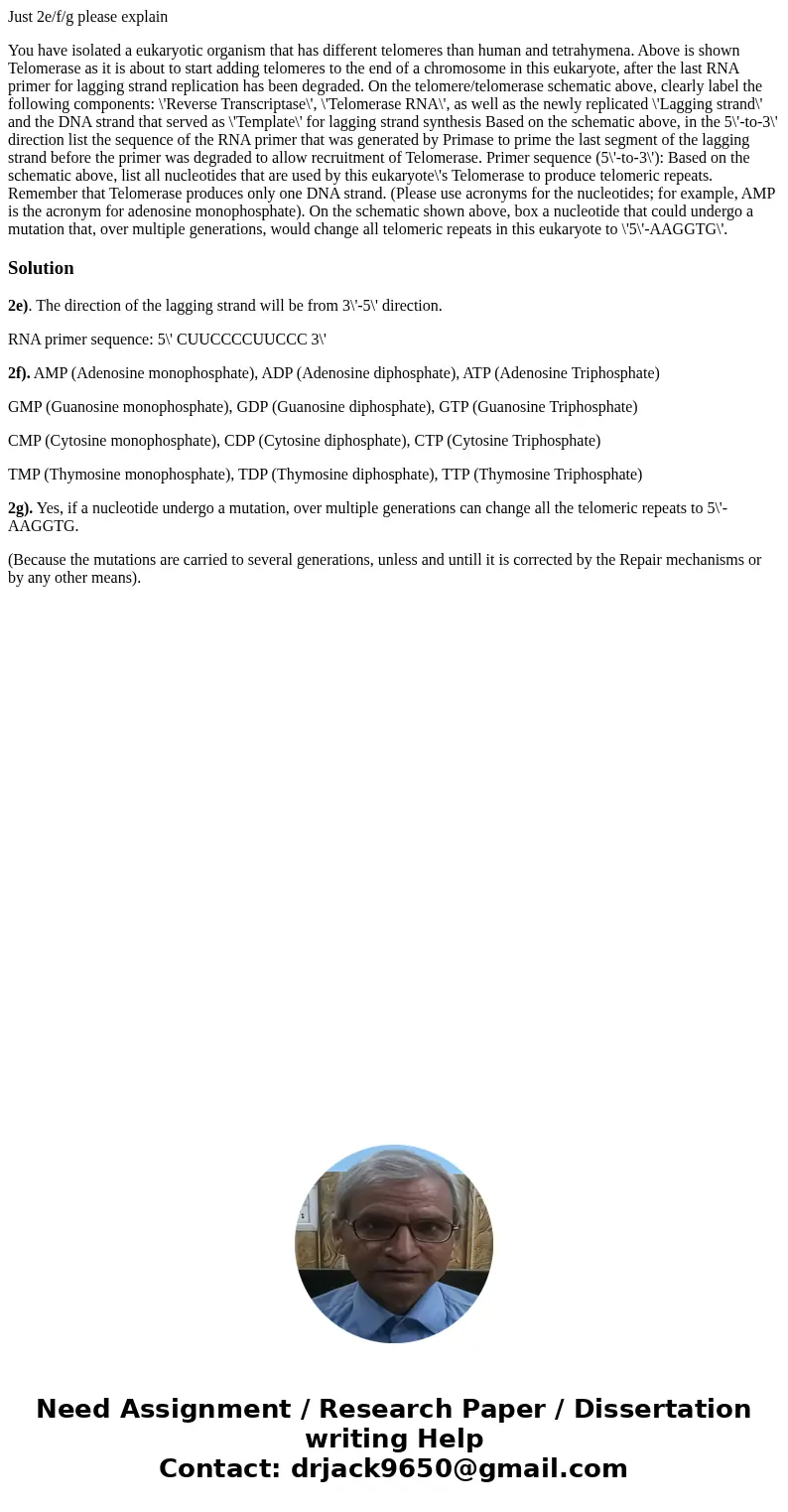Just 2efg please explain You have isolated a eukaryotic orga
Just 2e/f/g please explain
You have isolated a eukaryotic organism that has different telomeres than human and tetrahymena. Above is shown Telomerase as it is about to start adding telomeres to the end of a chromosome in this eukaryote, after the last RNA primer for lagging strand replication has been degraded. On the telomere/telomerase schematic above, clearly label the following components: \'Reverse Transcriptase\', \'Telomerase RNA\', as well as the newly replicated \'Lagging strand\' and the DNA strand that served as \'Template\' for lagging strand synthesis Based on the schematic above, in the 5\'-to-3\' direction list the sequence of the RNA primer that was generated by Primase to prime the last segment of the lagging strand before the primer was degraded to allow recruitment of Telomerase. Primer sequence (5\'-to-3\'): Based on the schematic above, list all nucleotides that are used by this eukaryote\'s Telomerase to produce telomeric repeats. Remember that Telomerase produces only one DNA strand. (Please use acronyms for the nucleotides; for example, AMP is the acronym for adenosine monophosphate). On the schematic shown above, box a nucleotide that could undergo a mutation that, over multiple generations, would change all telomeric repeats in this eukaryote to \'5\'-AAGGTG\'.Solution
2e). The direction of the lagging strand will be from 3\'-5\' direction.
RNA primer sequence: 5\' CUUCCCCUUCCC 3\'
2f). AMP (Adenosine monophosphate), ADP (Adenosine diphosphate), ATP (Adenosine Triphosphate)
GMP (Guanosine monophosphate), GDP (Guanosine diphosphate), GTP (Guanosine Triphosphate)
CMP (Cytosine monophosphate), CDP (Cytosine diphosphate), CTP (Cytosine Triphosphate)
TMP (Thymosine monophosphate), TDP (Thymosine diphosphate), TTP (Thymosine Triphosphate)
2g). Yes, if a nucleotide undergo a mutation, over multiple generations can change all the telomeric repeats to 5\'-AAGGTG.
(Because the mutations are carried to several generations, unless and untill it is corrected by the Repair mechanisms or by any other means).

 Homework Sourse
Homework Sourse